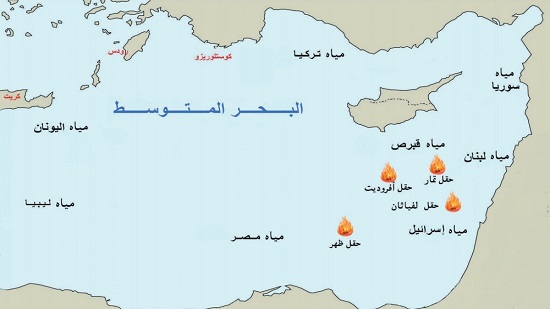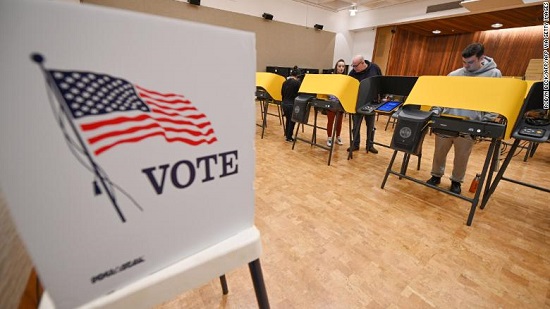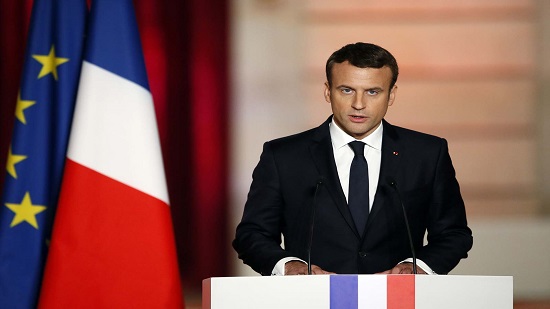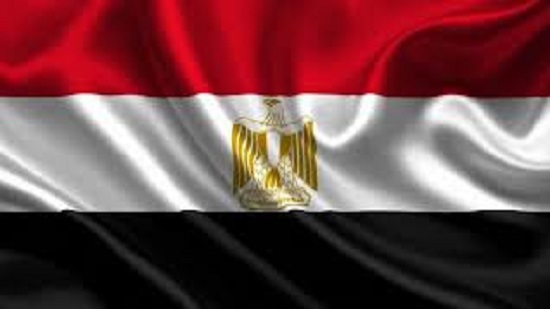Towards building a sustainable Egypt
Rebuilding a country and enshrining it in the ranks of developed nations after years of turmoil and economic crises is no easy feat. Doing so, while surrounded by conflict not only along all borders, but also within the country, is almost a miracle.
Since 2014, Egypt has set itself on a path to implement major changes to its economy, infrastructure, and society in the hope of eventually guaranteeing growth and a better future for its young population. In doing so, the government set itself a roadmap with the United Nations’ Sustainable Development Goals 2030 (SDGs) and the African Union’s Agenda 2063 in mind.
Initially called the Sustainable Development Strategy (SDS) 2030 (also known as Vision 2030), the strategy finalised in 2015 was to put Egypt on a rigorous path for change. Drafting a list of goals to be reached in different phases, the plan used 2020 as a major milestone year to evaluate its progress.
The SDS was divided into three main dimensions: Economic, Environmental, and Social. Each of the dimensions encompassed a list of targets for short and long-term plans that would ultimately advance Egypt in world rankings, namely in the following categories: Quality of Life, Anti-Corruption, Size of the Economy (measured by the Gross Domestic Product -GDP-), Market Competitiveness, and Human Development.
Even though it was taken into account in many projects since its drafting, the SDS proved it had much room for improvement in later years. The strategy was thus reassigned to a team of specialists in sustainable development in order to evaluate how it can be further improved to fit Egypt’s unique circumstances. That said, many of the projects mapped out in the SDS were completed and its plans for major economic reforms were followed.
Among the measures that Egypt took to achieve its economic goals were the opening of the Tahya Misr fund to gather national contributions to the country’s economy and the procurement of a number of external loans.
Among those loans were the $12bn loan in 2016 from the International Monetary Fund (IMF) to implement its economic reform plan. As well as, a loan from the World Bank acquired between the years 2015 and 2017 “called the Fiscal Consolidation, Sustainable Energy, and Competitiveness Development Policy Financing loans - worth a total of US$3.15 billion.”
These loans entailed applying hard and stringent economic reforms in order to achieve the set goals which included reducing government spending, and increasing revenue (i.e., by floating the Egyptian Pound, removing fuel subsidies, etc.).
As a result, Egypt has improved its ranking in many fields, most notably in road safety and infrastructure, becoming 2nd in Africa and 28th in the world in 2020 after it ranked 108th in 2016. It also rose in Global Competitiveness ranking, going from 116 in 2016 to 93 in 2019. In fact, according to an assessment by US News,
Egypt ranks #36 Best Country in the world, this ranking takes into account Egypt’s culture, tourism, heritage, and above all, Egypt’s development speed, ranking it #4 in the “Movers” category. The Movers subranking “represents a version of [a] metric predictive of a country’s future growth in terms of per capita purchasing power parity gross domestic product.”
In total, Egypt has “carried out national projects worth 4.5 trillion Egyptian pound ($284 billion) over the past six years.” Many of these projects had both sustainability and growth as their baseline, including what is projected to be the world’s biggest solar park in Benban, Aswan.
Following Egypt’s Sustainable Energy Strategy 2035, this project is part of the country’s plan to produce “20% of electricity from renewable sources by 2022.” Egypt further implemented its plan to modernise its irrigation system in the Delta region, installing drip irrigation systems in an area of over 7,476 feddans.
This project (among others) equips Egypt against its current water crisis which includes a deficit of 30 billion cubic meters in meeting its citizens’ water needs and the Grand Ethiopian Renaissance Dam crisis which threatens Egypt Rebuilding a country and enshrining it in the ranks of developed nations after years of turmoil and economic crises is no easy feat. Doing so, while surrounded by conflict not only along all borders, but also within the country, is almost a miracle.
Since 2014, Egypt has set itself on a path to implement major changes to its economy, infrastructure, and society in the hope of eventually guaranteeing growth and a better future for its young population. In doing so, the government set itself a roadmap with the United Nations’ Sustainable Development Goals 2030 (SDGs) and the African Union’s Agenda 2063 in mind.
Initially called the Sustainable Development Strategy (SDS) 2030 (also known as Vision 2030), the strategy finalised in 2015 was to put Egypt on a rigorous path for change. Drafting a list of goals to be reached in different phases, the plan used 2020 as a major milestone year to evaluate its progress.
The SDS was divided into three main dimensions: Economic, Environmental, and Social. Each of the dimensions encompassed a list of targets for short and long-term plans that would ultimately advance Egypt in world rankings, namely in the following categories: Quality of Life, Anti-Corruption, Size of the Economy (measured by the Gross Domestic Product -GDP-), Market Competitiveness, and Human Development.
Even though it was taken into account in many projects since its drafting, the SDS proved it had much room for improvement in later years. The strategy was thus reassigned to a team of specialists in sustainable development in order to evaluate how it can be further improved to fit Egypt’s unique circumstances. That said, many of the projects mapped out in the SDS were completed and its plans for major economic reforms were followed.
Among the measures that Egypt took to achieve its economic goals were the opening of the Tahya Misr fund to gather national contributions to the country’s economy and the procurement of a number of external loans.
Among those loans were the $12bn loan in 2016 from the International Monetary Fund (IMF) to implement its economic reform plan. As well as, a loan from the World Bank acquired between the years 2015 and 2017 “called the Fiscal Consolidation, Sustainable Energy, and Competitiveness Development Policy Financing loans - worth a total of US$3.15 billion.”
These loans entailed applying hard and stringent economic reforms in order to achieve the set goals which included reducing government spending, and increasing revenue (i.e., by floating the Egyptian Pound, removing fuel subsidies, etc.).
As a result, Egypt has improved its ranking in many fields, most notably in road safety and infrastructure, becoming 2nd in Africa and 28th in the world in 2020 after it ranked 108th in 2016. It also rose in Global Competitiveness ranking, going from 116 in 2016 to 93 in 2019. In fact, according to an assessment by US News,
Egypt ranks #36 Best Country in the world, this ranking takes into account Egypt’s culture, tourism, heritage, and above all, Egypt’s development speed, ranking it #4 in the “Movers” category. The Movers subranking “represents a version of [a] metric predictive of a country’s future growth in terms of per capita purchasing power parity gross domestic product.”
In total, Egypt has “carried out national projects worth 4.5 trillion Egyptian pound ($284 billion) over the past six years.” Many of these projects had both sustainability and growth as their baseline, including what is projected to be the world’s biggest solar park in Benban, Aswan.
Following Egypt’s Sustainable Energy Strategy 2035, this project is part of the country’s plan to produce “20% of electricity from renewable sources by 2022.” Egypt further implemented its plan to modernise its irrigation system in the Delta region, installing drip irrigation systems in an area of over 7,476 feddans.
This project (among others) equips Egypt against its current water crisis which includes a deficit of 30 billion cubic meters in meeting its citizens’ water needs and the Grand Ethiopian Renaissance Dam crisis which threatens Egypt s future water supplies.
All in all, prior to the Covid-19 pandemic, Egypt seemed to be on the right track towards achieving many of the milestones it had set for 2020. Yet, much like the rest of the world, Egypt was shaken by the pandemic and the partial lockdown it had to impose. Egypt’s robust economic reforms, however, are projected to have equipped it well enough to weather the storm and come out better than most. In fact, taking into account its resilient structure, the IMF has projected that Egypt will be the only country in the Middle East and North Africa region to have a predicted growth rate in its GDP in the years 2020/2021.
Despite the generally positive indicators, the rise in ranking, and obvious developments in the country, many are still concerned about the rising external debt and its long-term implications on the country’s economy. The IMF and the World Bank have both granted Egypt emergency funds to mitigate the effects of the pandemic. A double-edged sword, these loans prove that Egypt has managed its economy relatively well so far, and that its repayment strategy is robust enough.
Nevertheless, the increased debt puts additional pressure on the country’s production sector, its society, and its struggling currency. Rising further amidst a global economic crisis might also prove very difficult, especially if the world is hit with a second wave of the pandemic.
On the same wavelength the SDGs, already severely affected by global political apathy, are now under a stronger and more palpable threat as the crisis makes it highly unlikely the goals will be achieved by 2030. Economic concerns and political protectionism have all increased the risk of forgetting or overlooking the SDGs while attempting global economic revival. Yet, as much as the pandemic has shown that the world is now supremely interconnected and that this may have grave global consequences, it has also proved that global responses are essential for survival. The SDGs thus, now more than ever, would require a global action.
Similar to many countries, Egypt’s main target remains growth and rising to the ranks of the most developed states. While capitalism and sustainability do not necessarily go hand in hand, especially in times of crises, 60% of Egypt’s population is under the age of 30. Therefore, it remains imperative that while building the nation, sustainability is not forgotten.
Fortunately, there continues to be a palpable effort in the political discourse in Egypt to keep sustainability in mind. Integrating efforts in all sectors is essential in guaranteeing a green and sustainable economy, and the new plans seem to be taking this into consideration in almost all the new projects. In fact, President Abdel Fatah alSisi ratified the new sustainable development plan for the 2020/2021 fiscal year, keeping the fight against poverty at the forefront of the discussion.
There is no one size fits all for the creation of a sustainable nation. The SDGs, as set by the UN, have been written in a manner that allows them to be malleable to all national contexts. The discussion surrounding sustainable development in Egypt, despite its many hiccups, has thus far proved positive enough. Nonetheless, it has yet to reach the country’s citizens.
Communicating the importance of creating a sustainable nation to the masses is vital in order to truly implement and integrate sustainable projects in day-to-day life. The discussion should not be a nominal top-down conversation among the political elite, but an integral part of a citizen’s general behaviour in all sectors of society.
Egypt’s young population deserves to have a sustainable and green economy that would open up the job market and allow for positive growth for generations to come. While we still have a long and challenging road ahead, the fact that the conversation around growth and sustainability continues and that attempts at implementation are still moving forward, is a very positive omen for Egypt.s future water supplies.
All in all, prior to the Covid-19 pandemic, Egypt seemed to be on the right track towards achieving many of the milestones it had set for 2020. Yet, much like the rest of the world, Egypt was shaken by the pandemic and the partial lockdown it had to impose. Egypt’s robust economic reforms, however, are projected to have equipped it well enough to weather the storm and come out better than most. In fact, taking into account its resilient structure, the IMF has projected that Egypt will be the only country in the Middle East and North Africa region to have a predicted growth rate in its GDP in the years 2020/2021.
Despite the generally positive indicators, the rise in ranking, and obvious developments in the country, many are still concerned about the rising external debt and its long-term implications on the country’s economy. The IMF and the World Bank have both granted Egypt emergency funds to mitigate the effects of the pandemic. A double-edged sword, these loans prove that Egypt has managed its economy relatively well so far, and that its repayment strategy is robust enough.
Nevertheless, the increased debt puts additional pressure on the country’s production sector, its society, and its struggling currency. Rising further amidst a global economic crisis might also prove very difficult, especially if the world is hit with a second wave of the pandemic.
On the same wavelength the SDGs, already severely affected by global political apathy, are now under a stronger and more palpable threat as the crisis makes it highly unlikely the goals will be achieved by 2030. Economic concerns and political protectionism have all increased the risk of forgetting or overlooking the SDGs while attempting global economic revival. Yet, as much as the pandemic has shown that the world is now supremely interconnected and that this may have grave global consequences, it has also proved that global responses are essential for survival. The SDGs thus, now more than ever, would require a global action.
Similar to many countries, Egypt’s main target remains growth and rising to the ranks of the most developed states. While capitalism and sustainability do not necessarily go hand in hand, especially in times of crises, 60% of Egypt’s population is under the age of 30. Therefore, it remains imperative that while building the nation, sustainability is not forgotten.
Fortunately, there continues to be a palpable effort in the political discourse in Egypt to keep sustainability in mind. Integrating efforts in all sectors is essential in guaranteeing a green and sustainable economy, and the new plans seem to be taking this into consideration in almost all the new projects. In fact, President Abdel Fatah alSisi ratified the new sustainable development plan for the 2020/2021 fiscal year, keeping the fight against poverty at the forefront of the discussion.
There is no one size fits all for the creation of a sustainable nation. The SDGs, as set by the UN, have been written in a manner that allows them to be malleable to all national contexts. The discussion surrounding sustainable development in Egypt, despite its many hiccups, has thus far proved positive enough. Nonetheless, it has yet to reach the country’s citizens.
Communicating the importance of creating a sustainable nation to the masses is vital in order to truly implement and integrate sustainable projects in day-to-day life. The discussion should not be a nominal top-down conversation among the political elite, but an integral part of a citizen’s general behaviour in all sectors of society.
Egypt’s young population deserves to have a sustainable and green economy that would open up the job market and allow for positive growth for generations to come. While we still have a long and challenging road ahead, the fact that the conversation around growth and sustainability continues and that attempts at implementation are still moving forward, is a very positive omen for Egypt.























